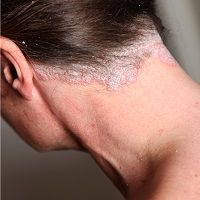Article
Study Finds ‘Rosacea Area and Severity Index’ System Provides Nuanced View of Rosacea Extent, Severity
Author(s):
Researchers tested the newly-designed Rosacea Area and Severity Index, or RASI, against the Investigator’s Global Assessment tool used to assess rosacea concerns for patients.
Nita K. F. Wienholtz, MD

A recent study found that its investigators’ recently-developed Rosacea Area and Severity Index (RASI) was comparable to the Investigator’s Global Assessment (IGA), though it provided more nuanced insights into rosacea.
A chronic inflammatory facial skin condition affecting an estimated 5.5% of the global population, rosacea was seen to be an important disorder for physicians to assess through a standardized evaluation of both extent and severity.
This study was designed to test IGA against the newly-designed RASI scoring system that had been developed by using elements of the validated Psoriasis Area and Severity Index (PASI), the Hand Eczema Severity Index (HECSI), and the Eczema Area and Severity Index (EASI). The study was led by NFK Wienholtz, MD, of the Copenhagen University Hospital Department of Dermatology.
“The currently used Investigator’s Global Assessment (IGA) is unspecific and fails to consider subtypes/phenotypes of rosacea and area involvement,” Wienholtz and colleagues wrote. “The Rosacea Area and Severity Index (RASI) was developed to give a more nuanced evaluation of rosacea features in four facial skin areas adjusted to the relative importance of each area of the face to obtain an overall severity score.”
Background
The study involved 16 dermatologists coming from both private practices and academic hospitals, to be used as clinicians who may end up utilizing RASI in clinical practice. They were chosen based on their experience examining signs and symptoms in rosacea patients.
The RASI system was designed by the study authors, with patient assessments being made digitally through high-resolution, online photographs of patients’ rosacea conditions. Both the IGA and RASI work as 5-point scale evaluations of severity measurement, but RASI also includes more specific information on the severity of each feature and affected areas.
Findings
The investigators’ study results indicated that RASI and IGA correlated well (Spearman Correlation Coefficient (SCC) = 0.75, 95% confidence interval (CI) = 0.72 - 0.78). They noted that RASI had moderate interobserver reliability whereas IGA had a ranking of poor-to-moderate.
Additionally, the research team noted that rhinophyma had the strongest reliability ranking, followed then by papules/pustules and erythema, with a notably weaker ranking for telangiectasia. Their assessment of interobserver reliability indicated that interobserver reliability proved to be strongest for cheeks, then nose, chin, and forehead, with a moderate-to-strong intraobserver agreement for RASI and IGA.
“We have designed a new practical tool to examine clinical severity of rosacea,” they wrote. “RASI proved simple and reliable in scoring clinical severity of rosacea with an agreement comparable to the currently used IGA although RASI will provide a more nuanced view of the current rosacea extent and severity. We suggest that RASI is used in the daily clinical setting as well as in clinical studies assessing the efficacy of rosacea therapies.”
This study, “Validity and reliability of the Rosacea Area and Severity Index (RASI): A scoring systemfor clinical assessment of rosacea severity,” was published in the Journal of the European Academy of Dermatology and Venereology.





